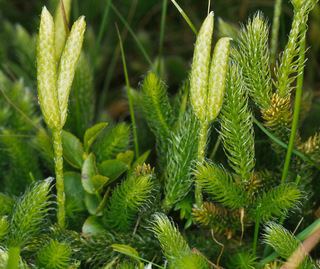Higher classification Clubmoss | Division Lycopodiophyta | |
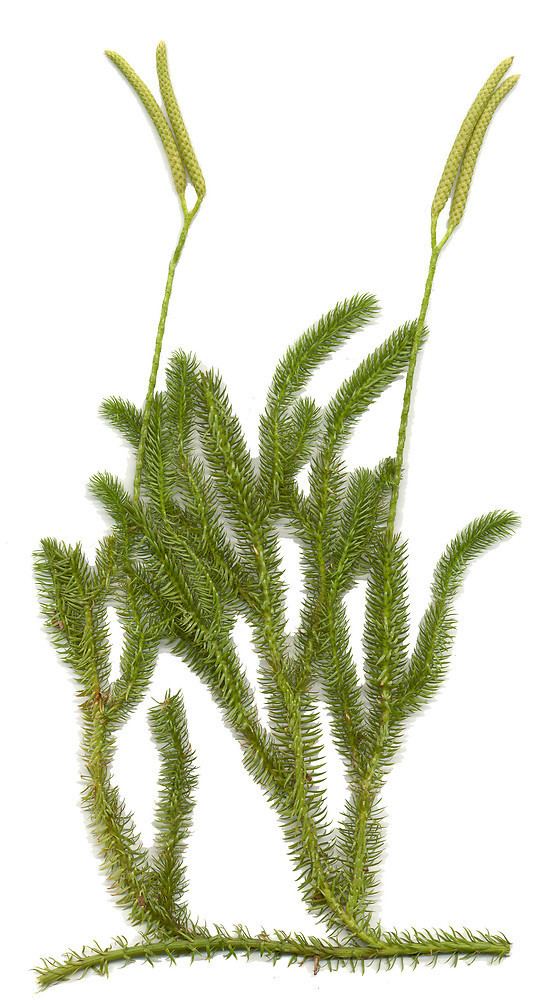 | ||
Similar Clubmoss, Lycopodiaceae, Lycopodium annotinum, Lycopodiophyta, Huperzia selago | ||
Information about lycopodium clavatum homeopathy
Lycopodium clavatum (stag's-horn clubmoss, running clubmoss, or ground pine) is the most widespread species in the genus Lycopodium in the clubmoss family.
Contents
- Information about lycopodium clavatum homeopathy
- Lycopodium clavatum
- Description
- Distribution
- References

Lycopodium clavatum
Description

Lycopodium clavatum is a spore-bearing vascular plant, growing mainly prostrate along the ground with stems up to 1 m (39 in) long; the stems are much branched, and densely clothed with small, spirally arranged microphyll leaves. The leaves are 3–5 mm long and 0.7–1 mm broad, tapered to a fine hair-like white point. The branches bearing strobili or spore cones turn erect, reaching 5–15 cm (2.0–5.9 in) above ground, and their leaves are modified as sporophylls that enclose the spore capsules or sporangia. The spore cones are yellow-green, 2–3 cm (0.79–1.18 in) long, and 5 mm (0.20 in) broad. The horizontal stems produce roots at frequent intervals along their length, allowing the stem to grow indefinitely along the ground. The stems superficially resemble small seedlings of coniferous trees, though it is not related to these.
Distribution
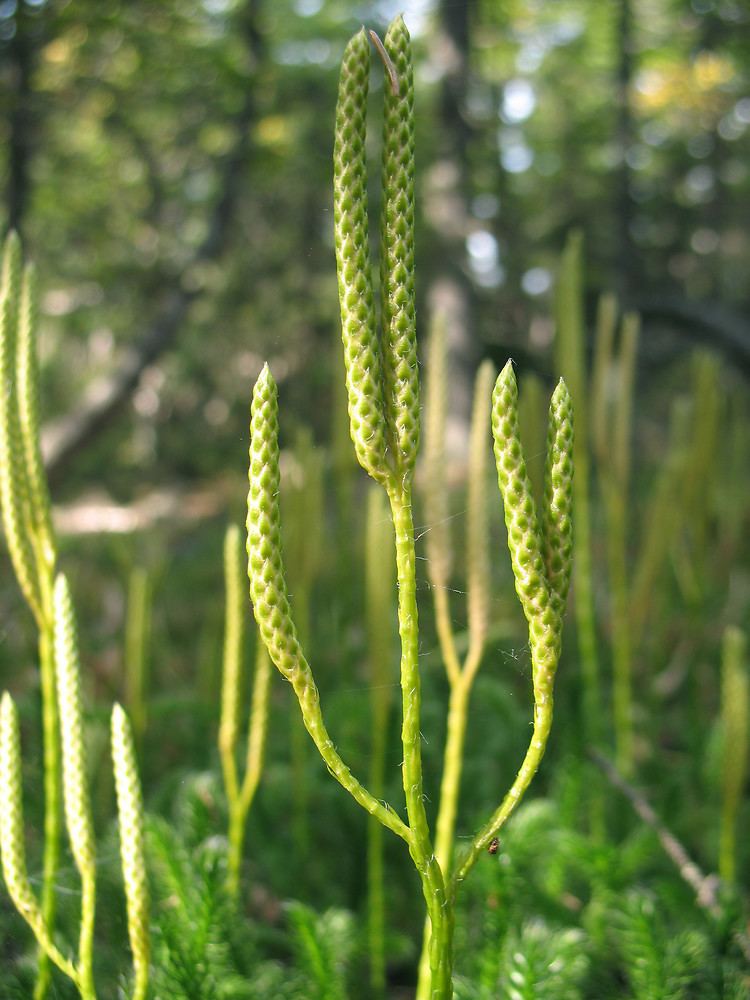
Lycopodium clavatum has a widespread distribution across several continents. There are distinct subspecies and varieties in different parts of its range:


Although globally widespread, like many clubmosses, it is confined to undisturbed sites, disappearing from farmed areas and sites with regular burning. As a result, it is endangered in many areas. In the UK it is one of 101 species named as a high priority for conservation by the wild plant charity Plantlife.
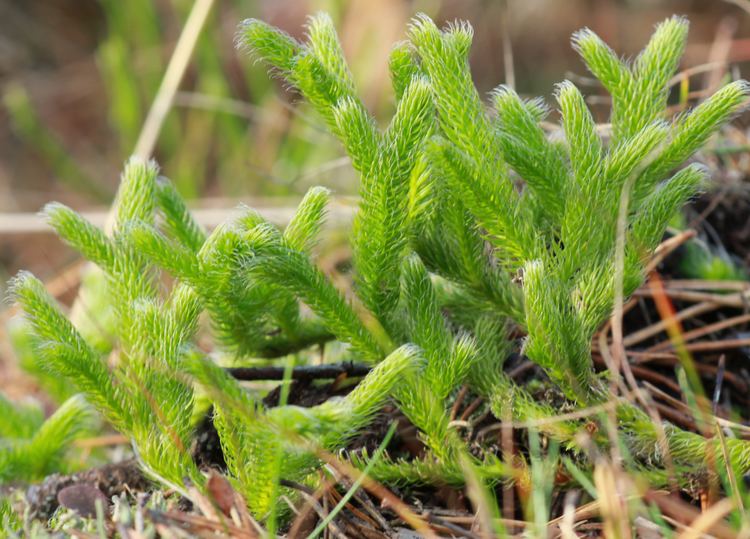
Common names for this species include wolf's-foot clubmoss, common clubmoss, wolf-paw clubmoss, foxtail clubmoss, running ground-pine, running pine, running moss, princess pine, and others.
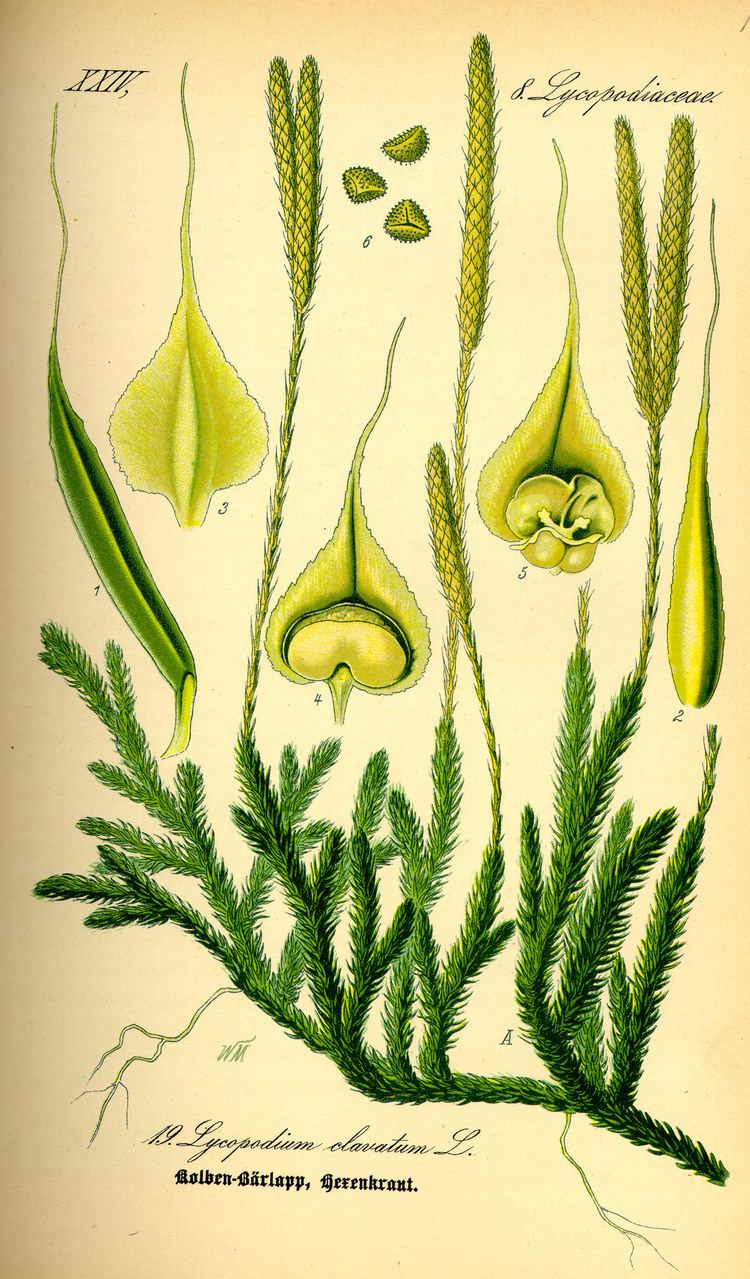
The spores of this moss, "lycopodium powder", are explosive if present in the air in high enough densities. They were used as flash powder in early photography and magic acts.
Bioactive secondary metabolites in clubmosses include triterpenoids with acetylcholinesterase inhibitor activity isolated from this species.
